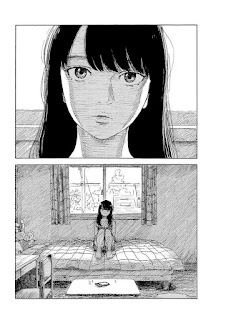1. The Potholes that Scriptwriters fall into.
The above panel shows the character's activities throughout his day of life. This is difficult in film and definitely not possible in one shot. Scriptwriters try to give a full backstory and as much information about the character as possible. However, in film one needs to choose one facet, one angle or find a more indirect way of showing everything that in is the panel. Most importantly it needs to be important and crucial for the whole story. There does not need to be any additional information about the character, only what is needed for the telling of a story.
Think of you story as if it where the panel above. One image cut into panels, instead of a 100 images leading to the final image. Look at your script and see if it could become one image like this.
2. Literal Storyboarding
Most storyboards and scripts read literally like the example of the panel above. Does it need the description? What about this panel. It just features light in an occupied cabin, empty chairs round a campfire and finally the character emerges from his cabin to say that he has prepared the fish for dinner. It is only now that we realise that the campfire is deserted. Why? Does the story need to say or do we soon find out?3. Conventional Storyboarding.
The above panel uses a conventional storyboard. An establishing shot with a man perhaps. The man walking. Close up of his face. He stops to look at the desolate landscape before him and then the literal message that he still has another 2 miles to go.
Here is another example of conventional storyboarding and storytelling. It is clear that the phone rings. She looks at the phone. A close-up of the phone with the name of the caller. She picks it up
Conversely this panel starts with dancing feet followed by the full reveal of the couple as the girl seems to be teaching him how to dance. It is only when we get closer to the girl's face that we notice her sadness and the fact that something is wrong.
4. Difference between same storyboard but different sequence.
The two panels above introduce their character in a similar way. One starts with the face and then establishes the space she is in and the other one starts with the space and then the face. What changes?
What about this different approach?
5. The counter / reverse shot.
The above panel portrays a classic example of the counter/ reverse shot. It is a comic but it may well be a film storyboard.
This is an alternative to the counter/ reverse shot, by placing the two characters next to each other and cutting one of the characters out to focus on the other.
6. Pacing
Comics pace their stories. There could be as many frames where nothing is happening or where time is passing. Note how the action happens in the bottom smaller frames. 7. How much information can one have in one shot?
The above panel shows us the spy protagonist framed by his quarry in one shot.
The above panel is not one shot, but it starts with an eventual depiction of people on the road, whatever the reason and the couple who for some reason or other are not on the move,

















Comments
Post a Comment